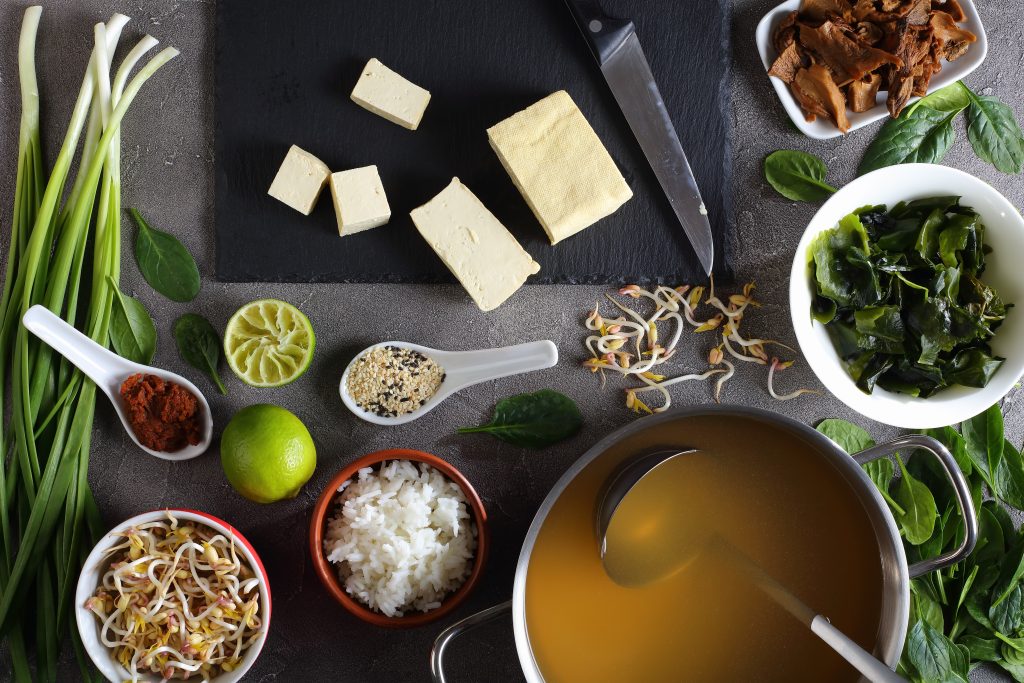Dashi, the essential Japanese stock, is the backbone of many Japanese dishes, imparting a rich umami flavor to soups, stews, and sauces. While store-bought dashi is readily available, there’s something deeply satisfying about crafting your own from scratch. In this guide, we’ll explore the art of making dashi using two key ingredients: kombu and bonito flakes.
What is Dashi?
Dashi is a traditional Japanese stock that forms the foundation of numerous dishes, including miso soup, ramen, and nabemono (hot pot). It provides a delicate yet savory flavor profile, elevating the taste of the dishes it enhances. The two primary ingredients used in making dashi are kombu (dried kelp) and bonito flakes (katsuobushi).
Ingredients:
- 1 piece of kombu (approximately 3×3 inches)
- 1 cup bonito flakes
Step 1: Prepare the Kombu
Start by wiping the kombu gently with a damp cloth to remove any dust or particles. Avoid washing it under water, as kombu’s unique flavor comes from its natural surface. Place the kombu in a pot with 4 cups of cold water.
Step 2: Let it Soak
Allow the kombu to soak in the water for at least 30 minutes. This allows the umami-rich compounds to infuse into the liquid, creating a flavorful base for your dashi.
Step 3: Slowly Heat the Kombu
Place the pot with kombu and water over medium heat. Just before the water starts to boil, remove the kombu. This prevents the liquid from becoming slimy and bitter. Do not let the kombu boil, as it can result in a less pleasant taste.
Step 4: Add Bonito Flakes
Once the kombu is removed, bring the liquid to a gentle simmer. Add the bonito flakes to the pot and let them simmer for about 2-3 minutes. The bonito flakes will sink to the bottom.
Step 5: Strain and Serve
Turn off the heat and let the bonito flakes settle. Strain the dashi through a fine mesh sieve or cheesecloth to remove the bonito flakes, leaving behind a clear and flavorful liquid.
Congratulations! You’ve just created a batch of homemade dashi, ready to be the secret ingredient in your culinary creations.
Tips and Variations:
- Cold Dashi (Mizudashi): For a refreshing twist, you can make cold dashi by skipping the heating step. Let the kombu soak in water in the refrigerator for a few hours, then add bonito flakes and strain.
- Niban Dashi: After making the first extraction, you can reuse the kombu and bonito flakes to create a secondary dashi called niban dashi, which is lighter but still flavorful.
- Storage: Dashi can be stored in the refrigerator for a few days or frozen for longer preservation. Consider freezing in ice cube trays for convenient portioning.
Experiment with your homemade dashi in various recipes, and discover the depth of flavor it brings to your dishes. Whether you’re a seasoned chef or a home cook, mastering the art of dashi opens up a world of culinary possibilities. Enjoy the journey of creating this fundamental Japanese stock from scratch and savor the rich, umami-filled results in your favorite dishes.







Be First to Comment